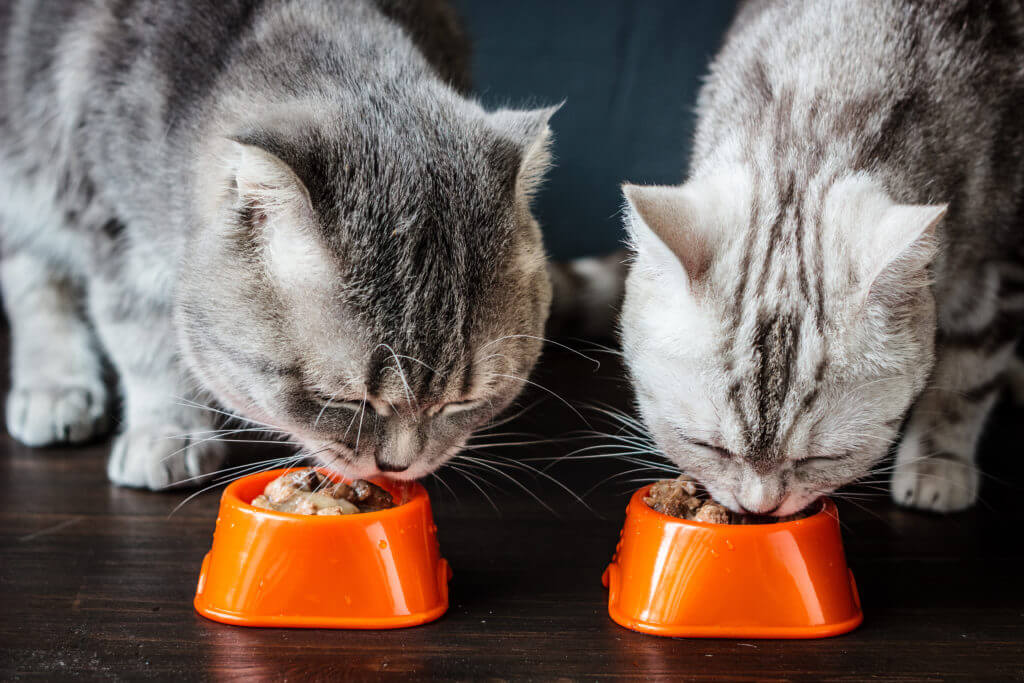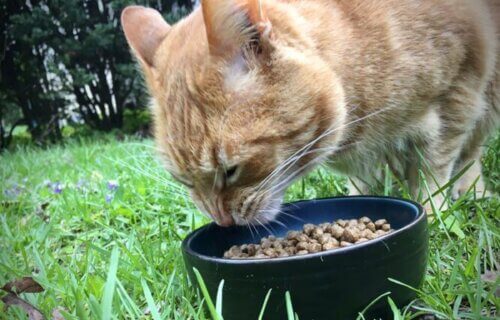CHAMPAIGN, Ill. — Garfield has been putting his health at risk all these years by wolfing down all that lasagna. Researchers from the University of Illinois Urbana-Champaign say a concerning trend of obesity among cats is emerging, impacting their overall health and well-being. Their new study specifically examined the effects of overeating on cats’ digestive systems and gut microbiota, finding that more than half of our feline friends are too heavy!
Around 60 percent of cats in the United States are currently classified as overweight, and this growing issue has a link to various health complications, including diabetes and chronic inflammation. While numerous studies have examined strategies for feline weight loss, the adverse effects of overeating and weight gain in cats have received limited attention.
“In this study, we wanted to learn more about the metabolic and gastrointestinal changes that occur as a result of overeating and weight gain in cats,” says study co-author Kelly Swanson, professor in the Department of Animal Sciences and interim director of the Division of Nutritional Sciences (DNS), part of the College of Agricultural, Consumer and Environmental Sciences (ACES) at U. of I., in a university release.
The study involved 11 adult spayed female cats, all of whom were provided with a standard dry cat food diet. After two weeks of baseline measurements, the cats were given unrestricted access to food. Blood and fecal samples were regularly collected, and their physical activity was closely monitored throughout the study.
Once given the opportunity to overeat, the cats significantly increased their food intake and began gaining weight rapidly. Initially, their average body condition score (BCS) was 5.41 on a nine-point scale, but after 18 weeks of overfeeding, it soared to 8.27, indicating they were 30 percent overweight. BCS is analogous to the body mass index (BMI) in humans, with scores of 6 or higher considered overweight.
Researchers assessed various parameters, including fecal output, gastrointestinal transit time, digestive efficiency (nutrient digestibility), and microbiota bacterial composition during the 20-week study.
As cats consumed more and gained weight, their gastrointestinal transit time decreased, leading to reduced digestive efficiency. This means that when the body receives more food, it processes it faster, resulting in fewer nutrients being absorbed.
“When the body gets less food, it will be more efficient in extracting nutrients. But when the amount of food increases, it passes through the digestive system faster and fewer nutrients are extracted in the process,” explains Swanso.

The study also uncovered significant changes in the cats’ gut microbial composition after 18 weeks of weight gain. Notably, the abundance of Bifidobacterium, which has antimicrobial properties, increased, while Collinsella, which is associated with fiber degradation and pro-inflammatory diseases, decreased. These findings contrast with those observed in overweight humans, suggesting that the relationship between gut microbiota and weight gain is intricate.
One novel discovery was the change in gastrointestinal transit time, which may explain the modifications to the fecal microbiome of cats.
“Future studies should consider measuring transit time to better explain modifications to the microbiome of pets,” notes Swanson.
As the cats’ food intake grew, so did their fecal output, reflecting the simple fact that more food consumption leads to increased excretion. At the same time, fecal pH decreased, indicating a more acidic stool.
“In humans, a low fecal pH indicates poor absorption of carbohydrates and fat,” says Swanson. “Our findings correlate with this, as reduced fecal pH aligned with higher food intake and reduced digestibility.”
Surprisingly, the study did not observe consistent changes in the cats’ physical activity levels despite weight gain.
“However, this could vary with individual cats and their environment, and how much their owners interact with them,” says Swanson.
Researchers concluded that understanding the metabolic and gastrointestinal changes associated with weight gain and obesity in pets could inform future prevention and treatment strategies.
For cat owners seeking to help their feline companions lose weight, several strategies were recommended. Another recent study by Swanson and his colleagues demonstrated that restricted feeding can promote safe weight and fat loss in cats. Additionally, encouraging physical activity through activities like placing food around the home for foraging or using food puzzles during mealtime can provide mental enrichment and engagement.
Following the conclusion of the weight gain study, the 11 cats were placed on a restricted-feeding diet, effectively helping them return to a healthier weight.
The study is published in the Journal of Animal Science.
You might also be interested in:
- Best Wet Cat Food: Top 5 Feline Feasts Most Recommended By Experts
- Best Cat Food Brands: Top 5 Feline Feasts Most Recommended By Experts
- What Are The Best Cats For Kids? Top 5 Breeds, According To Experts

